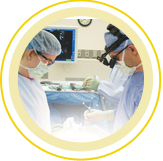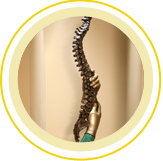Spinal fusion is a surgical procedure designed to stabilize the spine and relieve pain caused by damaged discs, pinched nerves, or other spinal conditions. By permanently joining two or more vertebrae, spinal fusion reduces movement in painful areas and restores stability. While it’s usually considered only after other treatments have been ineffective, spinal fusion can be a safe and effective option for many patients.
If you’re preparing for surgery, here are answers to some of the most common questions about spinal fusion recovery — including what to expect during healing, how long recovery may take, and tips for managing daily activities safely.

What Happens During Spinal Fusion Surgery?
During spinal fusion, your surgeon removes the damaged disc or bone and places bone graft material between the vertebrae. Over time, the graft stimulates new bone growth, causing the vertebrae to fuse into a single, solid segment. Metal plates, screws, or rods may also be used to keep the spine stable as healing occurs.
Spinal fusion can be performed using a traditional open approach or minimally invasive techniques. Minimally invasive methods often mean smaller incisions, less pain, and faster recovery.
How Long Does Spinal Fusion Recovery Take?
Recovery is gradual and varies by patient. In general:
- First weeks: Rest and limited activity; you may need to wear a brace for support.
- 6–12 weeks: Start physical therapy to rebuild strength and flexibility.
- 3+ months: Pain improves, and mobility begins to return.
- 4–6 weeks: Some patients can return to light or sedentary jobs.
- 6–12 months: Most people resume normal daily activities, including bending and twisting.
Your recovery may take longer if you have risk factors such as smoking, obesity, osteoporosis, or diabetes.
Will I Be Able to Walk After Surgery?
Yes. Most patients are encouraged to walk shortly after surgery, often with assistance at first. Walking helps circulation, prevents stiffness, and supports healing. However, you’ll need to gradually increase distance and avoid overexertion.
When Can I Drive Again?
Driving is usually restricted until you’re no longer taking prescription pain medication and can move comfortably enough to react quickly. This may take several weeks, depending on your healing progress. For your safety, always check with your surgeon before getting back behind the wheel.
How Soon Can I Return to Work?
- Sedentary jobs: Many patients return within 4–6 weeks.
- Physically demanding jobs: Recovery may take several months before it’s safe to resume.
Your doctor will guide you based on the type of work you do and your individual progress.
How to Treat Pain After Surgery
Some discomfort at the surgical site is expected. Pain management may include:
- Prescribed medications
- Ice or heat therapy
- Using supportive pillows for comfort while resting
- Gentle movement as recommended by your care team
Over time, most patients notice significant pain improvement compared with how they felt before surgery.
What Can I Do to Support My Recovery?
- Follow instructions carefully: Take medications as prescribed, and follow lifting and movement restrictions.
- Don’t smoke: Smoking slows bone healing and increases the risk of complications.
- Eat a nutritious diet: Foods rich in calcium, protein, and vitamin D help support bone growth.
- Stay active but safe: Walking and physical therapy will be important steps toward regaining mobility.
- Go to follow-up visits: These appointments help your doctor monitor healing and adjust your care plan.
Spinal Fusion Recovery: The Bottom Line
Spinal fusion is a major procedure, but with proper care and support, most patients experience lasting pain relief and a return to normal activities. Knowing what to expect — and following your recovery plan closely — can help you heal with confidence.
If back or neck pain has not improved with other treatments, contact Spine & Scoliosis Specialists in Greensboro, NC to discuss whether spinal fusion surgery is right for you and what your recovery could look like.



